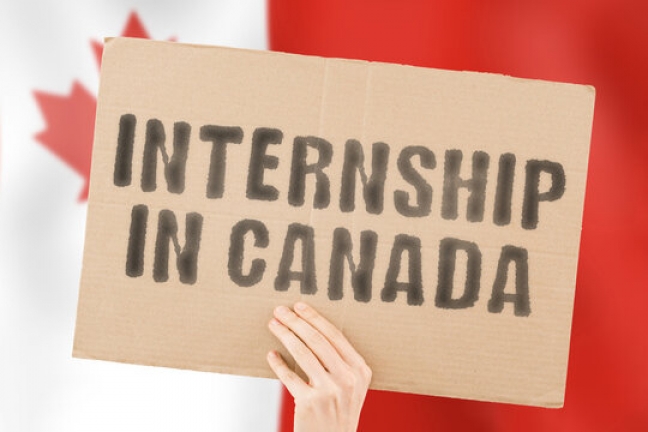If you’re considering studying in Canada, getting a Canadian student visa is an important step towards making it happen. This visa also called a study permit, can be a bit complicated to apply for and may take some time, but following these steps can help simplify the process for you. Studying in Canada can be a transformative experience you won’t regret. In this post I will all steps on How to Apply for a Canada Student Visa
Determine if You Need a Canadian Student Visa
Before applying for a Canadian student visa, it’s important to determine whether or not you require one. Not all international students need a study permit to study in Canada. If you plan to study in Canada for less than six months, you won’t need a student visa. However, if your study program is longer than six months, you’ll need to apply for a student visa.
To find out if you require a student visa, you can use the online tool provided by the Immigration, Refugees and Citizenship Canada (IRCC) website. The tool will ask you questions about your study plans and country of origin and then provide you with the information you need.
Gather the Required Documents
Before you begin your application, you’ll need to gather all the required documents. These typically include:
- A valid passport: Your passport must be valid for the entire duration of your stay in Canada.
- Proof of acceptance from a Canadian educational institution: You’ll need to provide a letter of approval from the Canadian educational institution you plan to attend.
- Evidence of financial support: You’ll need to show that you have enough money to cover your tuition fees and living expenses while you’re in Canada. This could include bank statements, proof of a scholarship, or a letter from a sponsor.
- English language proficiency test results: If English is not your first language, you’ll need to provide proof of your proficiency in English. The most commonly accepted tests are the TOEFL, IELTS, and CELPIP.
- Biometric data (fingerprints and photo): As part of the application process, you’ll need to provide biometric data, which includes your fingerprints and a photo. This data is used to create your student visa.
In addition to the above documents, you may also need to provide other documents, depending on your individual circumstances. For example, if you have a criminal record, you may need to provide a police certificate.
Apply Online
To apply for your Canadian student visa, follow these steps. First, create an account on Immigration, Refugees and Citizenship Canada (IRCC) website. Next, complete the application form, making sure to double-check all information before submitting it.
The application form will ask for information about yourself, your education, and your travel plans. Provide detailed educational history, including the name and address of institutions attended, dates of attendance, and degree or diploma earned.
Additionally, provide information about your travel plans, including intended date of arrival in Canada, mode of transportation, and port of entry. Lastly, provide details about your accommodation plans, including the name and address of where you’ll be staying in Canada.
Pay the Application Fee
After submitting your application, you will be required to pay an application fee. The amount of the fee depends on your country of origin and the type of study permit you are applying for. You can make the payment online using a credit or debit card. For a study permit, the current fee is CAD $150. Additionally, you may need to pay a biometric fee of CAD $85, depending on your country of origin.
Wait for a Decision
Once you have submitted your application and paid the fee, you will have to wait for a decision on your student visa application. The processing time can vary depending on factors such as the volume of applications and the complexity of your case. Typically, it can take anywhere from a few weeks to several months.
It is crucial to be patient during this waiting period and avoid making travel plans until you have received your student visa. If you have any questions or concerns about your application’s status, you can use the IRCC website’s application status tool to check it online.
Obtain a Temporary Resident Visa (TRV) if Required
If you’re from a certain country, it’s possible that you’ll need to get a temporary resident visa (TRV) in addition to your study permit to enter Canada. A TRV is essential for citizens of certain countries who want to enter Canada. You can apply for a TRV at the same time you apply for your student visa, or you can apply later. To apply for a TRV, you’ll need to provide additional documents like a valid passport, proof of financial support, and a letter of invitation from a Canadian citizen.
Arrive in Canada and Activate Your Student Visa
After obtaining your student visa, it’s time to plan your trip and make your way to Canada. Upon arrival, you’ll need to provide the immigration officer with your passport, letter of introduction (received with your visa), and any other necessary documents at the port of entry.
The officer will verify your information and activate your student visa. It’s important to carefully follow all of their instructions and keep your documents secure as they may be required again during your time in Canada.
Maintain Your Status in Canada
After you arrive in Canada, it’s crucial to keep your status as a student up-to-date. This means attending classes on a regular basis, abiding by the rules and regulations of your study permit, and renewing your permit before it expires. If you have any inquiries or worries regarding maintaining your status, you can reach out to the International Student Services department at your school or refer to the IRCC website for further assistance.
Conclusion
As you embark on the journey of applying for a Canadian student visa, remember that you are taking a bold step towards a brighter future. The process may seem daunting, but with determination and perseverance, you can achieve your dream of studying in Canada. Keep in mind that every obstacle you overcome is a testament to your strength and resilience. So don’t give up, keep pushing forward, and trust that the universe will conspire to make your dreams come true. As you prepare your application, visualize yourself already studying in Canada, making new friends, and experiencing new cultures. Believe in yourself and your abilities, and nothing can stop you from achieving greatness. Good luck on your journey!










